Sagunto was a wooden-hulled Armada Real armored frigate ordered as a ship of the line back in 1858, and reconverted in 1862-69, then commissioned in 1877. A very lengthy construction at the Reales Astilleros de Esteiro, punctuated by many design flaws and corrections resulting eventually in a short service life of just ten years, when decommissioned in 1887, stricken from the register in 1891. Named after the second Punic war Siege of Saguntum, she had imported steam engine and main battery. The major issue was that not only she was desperately obsolete in 1877, her wooden hull was already rotten in her unremarkable service, being dried up as far as the 1850s.
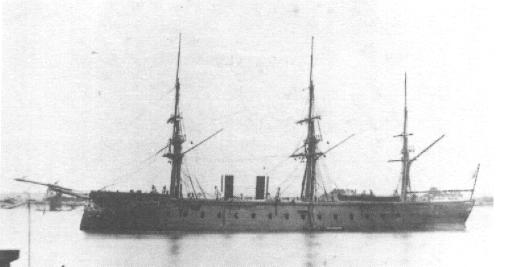
Design
Still Debated Origins:
Sources are conflicting on this ship. Sagunto was for one, ordered in December 1862 as a 100-gun ship of the line “Principe Don Alfonso”. She was originally laid down at the Reales Astilleros de Esteiro in Ferrol, Spain, on 21 March 1863. Later she was renamed Sagunto in 1868 while in convertion, to a central battery ironclad, to be launched on 26 April 1869, commissioned on 1 February 1877.
According to another source (including most Spanish ones), she was laid down instead as early as 1858 as the 100-gun “Principe Alfonso”. Then in 1860, the Spanish government decided to converted her as an armored frigate instead, authorized on 5 October 1862. The added cost was a staggering 1,401,151 pesetas. She was renamed “Sagunto” on 13 October 1868, launched on 26 April 1869, so the latter date is the only one all agrees.
Hull & Layout:
Segunto was built originally in wood, so she was at the limit of wooden vessels structurally at the time. Her hull measured 89.5 meters (293 ft 8 in) long at the waterline for a beam of 17.3 meters (56 ft 9 in) and draft of 8.4 meters (27 ft 7 in). The hull ratio was 5/1. She displaced 7,352 metric tons (7,236 long tons). Her ram bow was in the British style, not too pronounced, in a half moon. Her crew amounted to 554 officers and enlisted men. She had lavish interiors as usual in the officers quarters aft. The grand banquet room in particular was modular and that proved well suited later when the Royal Family travelled on her board.
Armour Protection:
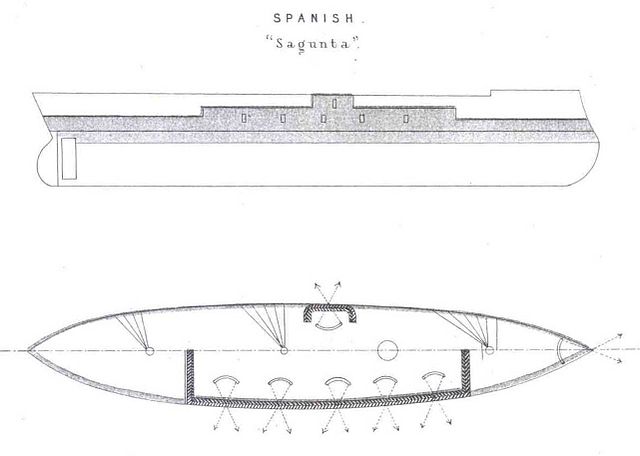
-Waterline belt, complete wrought iron, 150-millimeter (5.9 in) in thickness.
-Upper batterie belt, 150-millimeter (5.9 in).
-Ends and deck unarmored. Steering vulnerable and battery under raking fire.
-No conning tower.
Powerplant:
Originally Sagunto was given a two-bladed, then four bladed screw propeller, which was driven by two imported Forges et Chantiers de la Méditerranée compound-expansion steam engines. Steam came from eight cylindrical boilers. These engines were rated at 1,000 horsepower (746 kW) which makes for 3,700 indicated horsepower (2,759 kW). Top speed was 12.5 knots (23.2 km/h; 14.4 mph). She carried no less than 900 metric tons (886 long tons) of coal but range was probably around 1000-1200 nm. Of course, it was unlimited when using her unchanged three-masted ship rig. The sail area was 2,400 square meters (26,000 sq ft).
As a steamship, she was supposed to reach from 10 to 12.5 knots (18.5 to 23.2 km/h; 11.5 to 14.4 mph). But sea trials were properly catastrophic, as she could not make better than 5 knots (9.3 km/h; 5.8 mph). This led to a serie of modifications that delayed her greatly. First off, her stern and propeller were changed to try to correct the problem, and indeed she then managed to reach 10.5 knots (19.4 km/h; 12.1 mph).
Armament:
Sagunto was intended to to have at first in 1860-62, some thirty 200-millimeter (7.9 in) smoothbore guns, all on the broadside. Instead she was completed as a central battery ship with eight single Armstrong-Whitworth 229-millimeter (9 in) rifled muzzle-loading (RML) guns. Four per side, all on the main deck in a central-battery. There was an upper deck also well protected in which were located two broadside firing Trubia 180-millimeter (7.1 in) RML guns. A third was located as a chase gun forward in the forecastle. By 1883, the Trubia guns were replaced by British Palliser RMLs to fire explosive shells.
⚙ Sagunto specifications |
|
| Displacement | 7,352 t (7,236 long tons) |
| Dimensions | 89.5 x 17.3 x 8.4 m (293 ft 8 in x 56 ft 9 in x 28 ft) |
| Propulsion | 1 shaft, 2 compound-expansion steam engines 8 boilers 3,700 ihp (2,800 kW) |
| Speed | 12.5 knots (23.2 km/h; 14.4 mph) |
| Range | 2,400 nmi (4,400 km; 2,800 mi) at 10 knots, Unlimited with rig. |
| Armament | 8× 229 mm (9 in) RML, 3× 180 mm (7.1 in) RML |
| Protection | Belt: 150 mm (5.9 in), Battery: 150 mm (5.9 in) |
| Crew | 554 |
Career of Sagunto
Her problems, fixes and long completion were not helped by the chaotic situation in Spain at the time. She was thus renamed “Amadeo I” by Royal Order of 13 February 1871. Then a new government change led to her being renamed Sagunto again on 4 March 1873. After a hard time to finance her, find workers and materials, she was eventually completed in 1877. This was… 19 years after she was laid down as a ship of the line, 15 years after being ordered as an ironclad. Total construction cost was 7,230,049 pesetas, an absurdly large amount for a ship that would have ten years service.
Spain was not done with construction times like this, having similar situations with ships built from 1939 onwards, notably the Ocquendo class. The most damning thing about Sagunto was her layout as a hybrid central battery ship at a time steam only steel turret or barbette ships were all the rage.
Records are unknown for 1877-79, she probably started training, making short cruises and gunnery drills. In 1880, Sagunto was assignment to the Training Squadron under Contralmirante (Counter Admiral) José Polo de Bernabé y Mordella. This assignation is usually given to ships at the end of their career, having lost their usefulness in first line. In the summer of 1881, Sagunto and Zaragoza, the screw frigates Almansa, Carmén, Villa de Madrid, screw corvette Tornado, screw schooner Concordia, gunboat Pelícano were sent to cruise off Galicia for a visit by King Alfonso XII and Queen Maria Christina.

Sagunto was Polo de Bernabé’s flagship to lead maneuvers in front of the King on 9 August. The King and entourage and the Minister of the Navy, Admiral Francisco de Paula Pavía Pavía were on her board on 13 August for the last leg to La Coruña and then Villagarcía de Arosa on 15 August. On the 18th, she departed Marín with the monarchs, which disembarked at Vigo, on 19 August. On the 25th they boarded Pelícano to visit Bayonne in France. The Monarchs Alfonso XII and Maria Christina ended this squadron trip to Santander, having boarded Sagunto again. The Villa de Madrid remained behind at Vigo. The squadron then proceeded to Ferrol by late August 1881.
Her whereabouts in 1882-84 are unknown, probably a partial reserve, and yearly exercises for a brief period. By 1885, Sagunto seemed to leak abundantly, and it was decided to have her drydocked for examination. The verdict was clear: Her wooden hull was entirely rotten. Being no longer seaworthy and too obsolete to be of any use, the guns were partially removed, and she was placed in reserve in 1886. She was declared obsolete in 1887, then stricken from the naval register in 1891. In February 1893, she was sold off at auction, for naught. The Armada then hulked her as a floating jetty until 1896. At last, a scrap dealer in Palma de Mallorca acquired her to recycle her armour and other metallic items in 1897, shortly before the Hispano-American war. If modernized, she could have been of some use as coastal defence ship, but her antiquated wooden hull was her undoing.
Read More/Src
Books
Greene, Jack & Massignani, Alessandro (1998). Ironclads at War: Origin and Development 1854–1891. Combined Publishing.
Lyon, Hugh (1979). “Spain”. In Gardiner, Robert (ed.). Conway’s All the World’s Fighting Ships 1860–1905. Conway Maritime Press.
de Saint Hubert, Christian (1984). “Early Spanish Steam Warships, Part II”. Warship International. XXI (1)
Silverstone, Paul H. (1984). Directory of the World’s Capital Ships. New York: Hippocrene Books.
Brassey, Thomas (1888). The Naval Annual 1887. Portsmouth, England: J. Griffin.
Links
alojados.revistanaval.com
https://web.archive.org/web/20080406132534/http://www.armada.mde.es/ArmadaPortal/appmanager/ArmadaPortal/ArmadaPortal?_nfpb=true&_pageLabel=ap_page_buquesSuperficie_buque&pathNodo=%2FBEA+Repository%2Fdesktop_armada_portal%2Fap_book_main%2Fcc_ap_book_buques%2Faa_ap_book_buques_superficie%2FAH_Portaaviones%2FAA_PrincipeAsturias
todoavante.es/
en.wikipedia.org Spanish_ironclad_Sagunto


 Latest Facebook Entry -
Latest Facebook Entry -  X(Tweeter) Naval Encyclopedia's deck archive
X(Tweeter) Naval Encyclopedia's deck archive Instagram (@navalencyc)
Instagram (@navalencyc)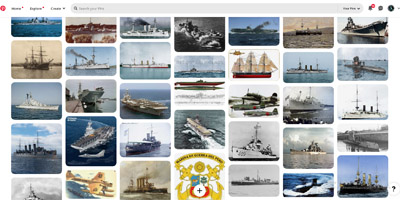


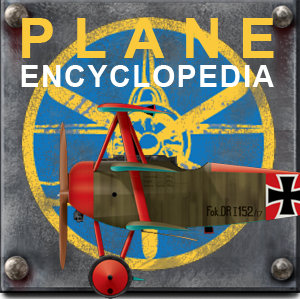
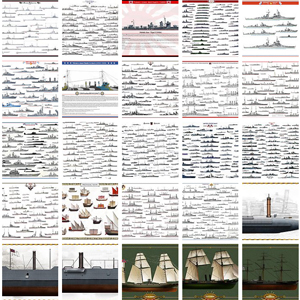

 French Navy
French Navy Royal Navy
Royal Navy Russian Navy
Russian Navy Armada Espanola
Armada Espanola Austrian Navy
Austrian Navy K.u.K. Kriegsmarine
K.u.K. Kriegsmarine Dansk Marine
Dansk Marine Nautiko Hellenon
Nautiko Hellenon Koninklije Marine 1870
Koninklije Marine 1870 Marinha do Brasil
Marinha do Brasil Osmanlı Donanması
Osmanlı Donanması Marina Do Peru
Marina Do Peru Marinha do Portugal
Marinha do Portugal Regia Marina 1870
Regia Marina 1870 Nihhon Kaigun 1870
Nihhon Kaigun 1870 Preußische Marine 1870
Preußische Marine 1870 Russkiy Flot 1870
Russkiy Flot 1870 Svenska marinen
Svenska marinen Søværnet
Søværnet Union Navy
Union Navy Confederate Navy
Confederate Navy Armada de Argentina
Armada de Argentina Imperial Chinese Navy
Imperial Chinese Navy Marinha do Portugal
Marinha do Portugal Mexico
Mexico Kaiserliche Marine
Kaiserliche Marine 1898 US Navy
1898 US Navy Sovietskiy Flot
Sovietskiy Flot Royal Canadian Navy
Royal Canadian Navy Royal Australian Navy
Royal Australian Navy RNZN Fleet
RNZN Fleet Chinese Navy 1937
Chinese Navy 1937 Kriegsmarine
Kriegsmarine Chilean Navy
Chilean Navy Danish Navy
Danish Navy Finnish Navy
Finnish Navy Hellenic Navy
Hellenic Navy Polish Navy
Polish Navy Romanian Navy
Romanian Navy Turkish Navy
Turkish Navy Royal Yugoslav Navy
Royal Yugoslav Navy Royal Thai Navy
Royal Thai Navy Minor Navies
Minor Navies Albania
Albania Austria
Austria Belgium
Belgium Columbia
Columbia Costa Rica
Costa Rica Cuba
Cuba Czechoslovakia
Czechoslovakia Dominican Republic
Dominican Republic Haiti
Haiti Hungary
Hungary Honduras
Honduras Estonia
Estonia Iceland
Iceland Eire
Eire Equador
Equador Iran
Iran Iraq
Iraq Latvia
Latvia Liberia
Liberia Lithuania
Lithuania Mandchukuo
Mandchukuo Morocco
Morocco Nicaragua
Nicaragua Persia
Persia San Salvador
San Salvador Sarawak
Sarawak Uruguay
Uruguay Venezuela
Venezuela Zanzibar
Zanzibar Warsaw Pact Navies
Warsaw Pact Navies Bulgaria
Bulgaria Hungary
Hungary

 Bundesmarine
Bundesmarine Dutch Navy
Dutch Navy Hellenic Navy
Hellenic Navy Marina Militare
Marina Militare Yugoslav Navy
Yugoslav Navy Chinese Navy
Chinese Navy Indian Navy
Indian Navy Indonesian Navy
Indonesian Navy JMSDF
JMSDF North Korean Navy
North Korean Navy Pakistani Navy
Pakistani Navy Philippines Navy
Philippines Navy ROKN
ROKN Rep. of Singapore Navy
Rep. of Singapore Navy Taiwanese Navy
Taiwanese Navy IDF Navy
IDF Navy Saudi Navy
Saudi Navy Royal New Zealand Navy
Royal New Zealand Navy Egyptian Navy
Egyptian Navy South African Navy
South African Navy






























 Ukrainian Navy
Ukrainian Navy dbodesign
dbodesign